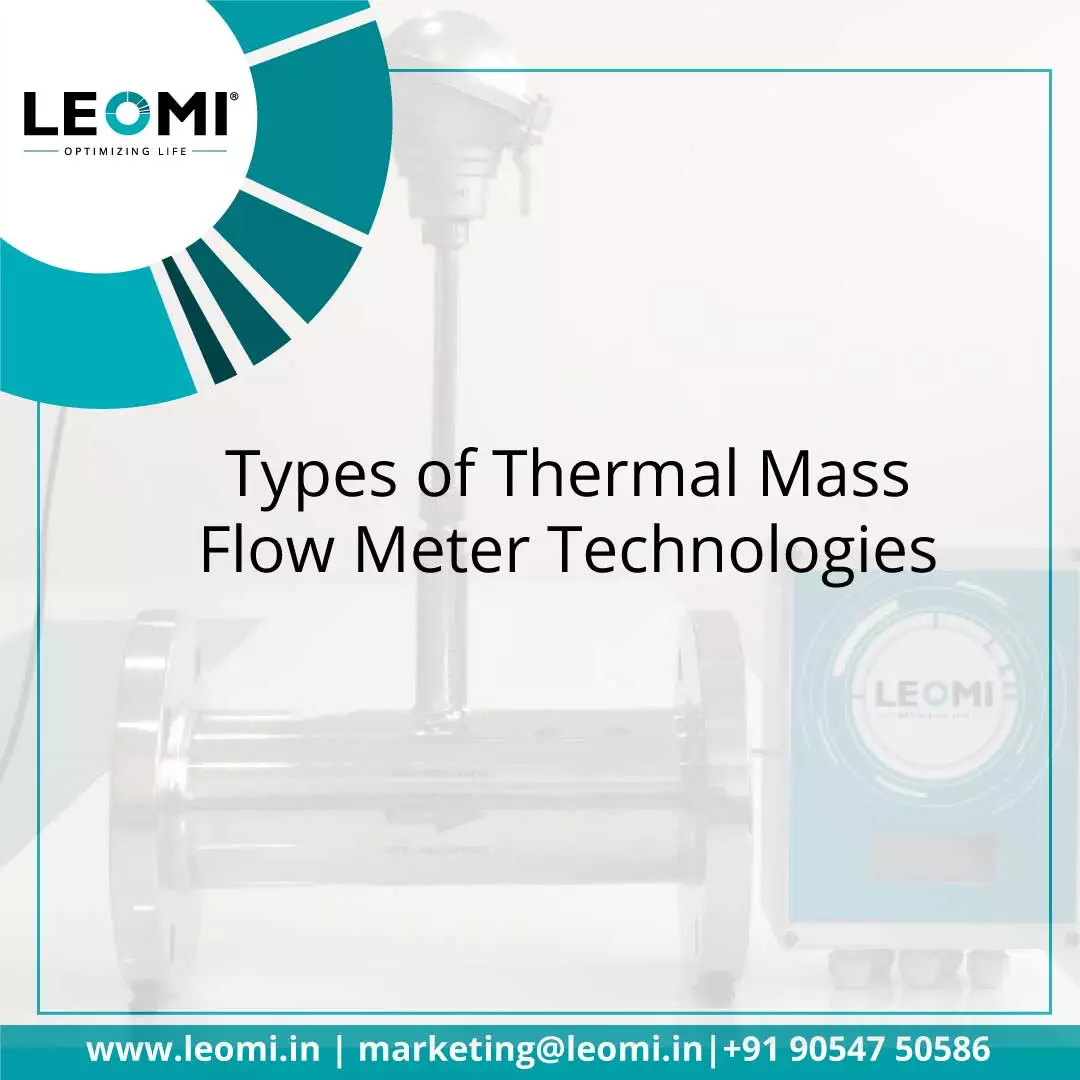TYPES OF THERMAL MASS FLOWMETER TECHNOLOGIES
Within this blog, we will discuss the different types of thermal mass flowmeter technologies. Thermal mass flowmeters operate on the principle where a heat source is applied to the inlet of the mass flow meter and is then transmitted from one part of the device to another, increasing in temperature (gain an amount of q) based on its thermal resistance. The change in temperature as a function of time causes a corresponding change in thermal conductance (change in convective heat transfer coefficient h). As fluid flows through a pipe it changes its speed due to frictional forces and if there is a thermocouple placed at various points within this pipe can determine how much varying thermal power dissipation occurs within that length by relating it back to a known conduit’s temperature gradient.
Let us discuss the types of thermal mass flowmeters:
1. INSERTION THERMAL MASS FLOW METER
if we have large pipes and don’t want to cut them, then maybe we can use an insertion thermal mass flow sensor. Rather than cutting the pipe, an insertion sensor is inserted into the pipe between two flanges. This one’s easy to install, comes in different sizes and measures the heat of flowing gas. Therefore it doesn’t require a calibration gas, has no moving parts, is unaffected by shock cycling and vibration. To find out the total mass flow within the pipe, this sensor factors in the flow rate, compensation and cross-section of your pipe and pressure drop across a specified range by using carefully selected numerical algorithms that are run on a microcontroller. When we scale out a new insertion sensor, we need to make sure that it goes in line with a length of pipe where there won’t be any measurement problems such as where the customer had entered data for the wrong size pipe or inserted the sensor incorrectly.
2. BYPASS THERMAL MASS FLOW METER
Below you can see two names for this device. We call it either a bypass flow meter or a capillary tube flow meter. This type has a laminar flow element and includes an inlet and outlet for the capillary tube where the fuel flows during its cycle. The capillary tube houses all the components of the system, including the transducer and heating coil, but keep in mind that each vendor can have their own variation of it. For example, some may provide up to 3 sensors while others may use 2 heating systems depending on what their design offers. This permits you to get more information out of your fuel data such as oxygen content to help determine whether there is any contamination present during transport or storage.
3. INLINE THERMAL MASS FLOW METER
This product has a lightweight, yet aerodynamic shape. It combines the advanced sensor and transmitter in patented packaging. It contains several components such as aluminum, plastic, and fiberglass composites. Due to its cylindrical design, this shell gives the thermal dispersion required at different speeds.
WHY INSERTION THERMAL MASS FLOW METER IS A BETTER CHOICE?
Insertion Thermal Mass Flow Meter is a widely used process instrument that is used for measuring volumetric flow rate and thermal conductivity of the materials that are flowing through the process. The fact that an Insertion Thermal Mass Flow meter is a type of thermal mass flow meter, which is thermally compensated for temperature effects in process flow systems, makes it ideal for detecting process flow deviations.
Moreover, Insertion Thermal Mass Flowmeter is a one-time measurement and substitutes the direct reading of flow rate from multiple instruments. Originally developed for the pharmaceutical industry, it was widely adapted to process equipment such as mixing chambers, reactors, and distillation columns over time. Thermal mass flow meters are mainly used in large volume process equipment where the measured temperature change is sufficiently small to be quantifiable. While Insertion Thermal Mass Flowmeter can only provide a reliable estimate of thermal conductivity which varies with time during certain processes, it may give more accurate measurements due to its ability to capture steady-state conditions than other instruments such as paddle wheel meters or rotameters during certain processes. This makes it a great choice for system control, detection of deviations, and measuring plant improvements related to mass flow rate.
LEOMI’S INSERTION THERMAL MASS FLOWMETER
Leomi aims to optimize everyday life with a higher standard of living by manufacturing high-quality Thermal mass flow meters with years of industry experience. Leomi combines decades of experience at Softflow.de in the field of thermal flow measurement and provides reliable meters for customers worldwide!
Leomi thermal mass flowmeter offer benefits such as:
- No moving parts, robust metallic construction, and direct mass flow measurement of gases
- No pressure drop which saves energy against other conventional flowmeters
- The highest turn down-ratio better than 100:1 provides high sensitivity helps in leak detection
- High accuracy <±1.5% and resolution against conventional flow meters.
- Designed up to 400⁰C operating temperature and pressure up to 16bar or higher.
- Easily cleanable sensor & No significant effect of moisture like thin-film sensor does.
- Can work in dirty or wet gas environments with accessories
- Adjustable in various pipe sizes and versatile for different gas and mixtures.
- Digital controlled with No drift and long term mechanically stable design
LEOMI’s technical team is continuously working on researching different gas mass flow measurement solutions for various industries that can be implemented while keeping in mind both process and industrial standards.
Request to kindly write us your inquiry related to the above application and will happy to assist with flow solutions at our best. For more information, log on to https//www.leomi.in & follow us on our LinkedIn page for more updates.



Comments
Post a Comment